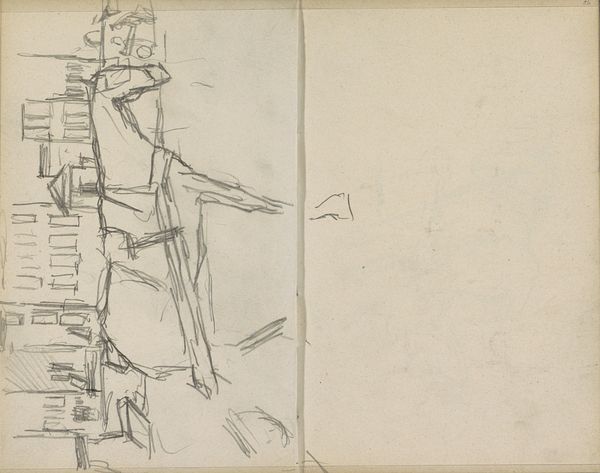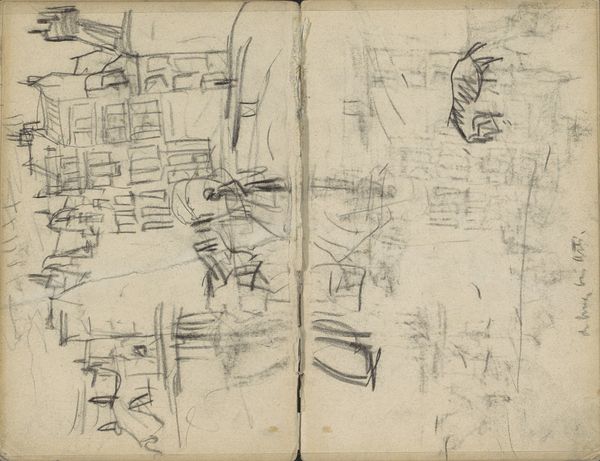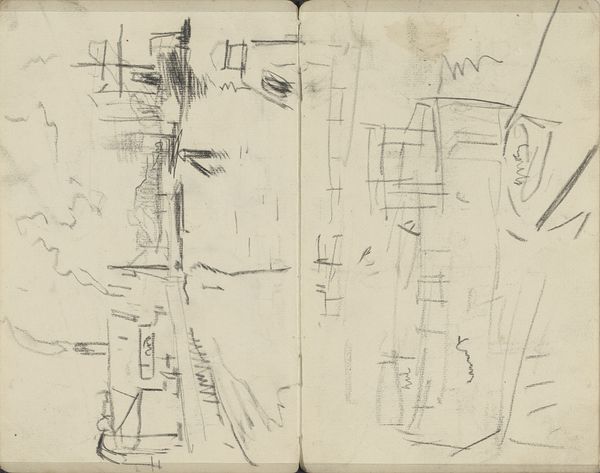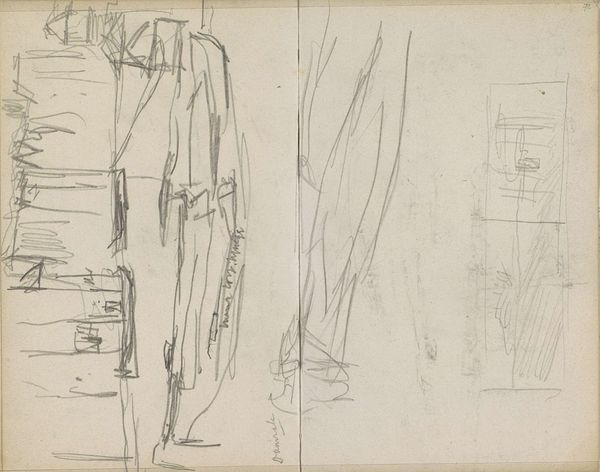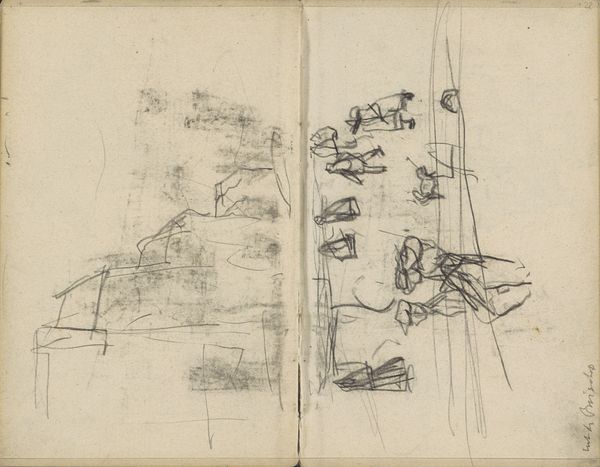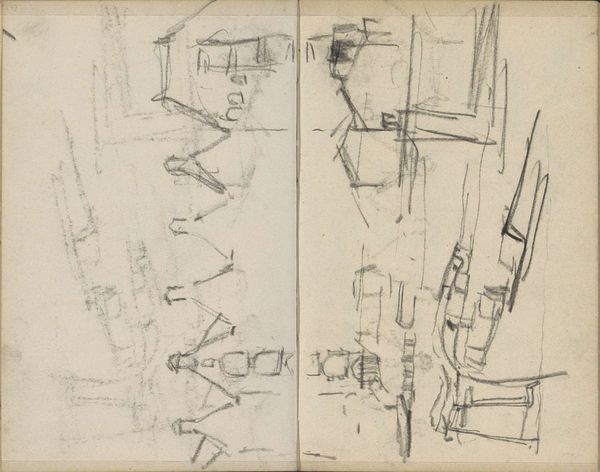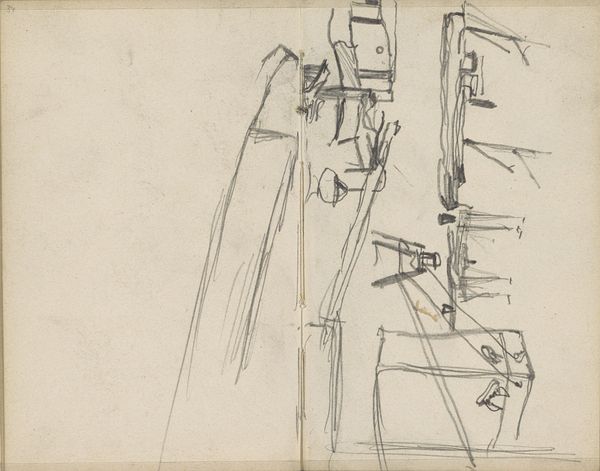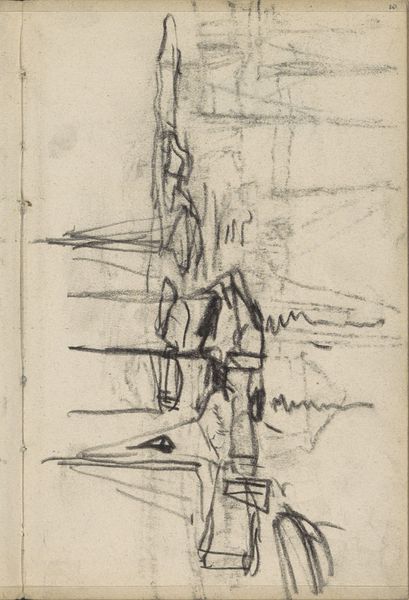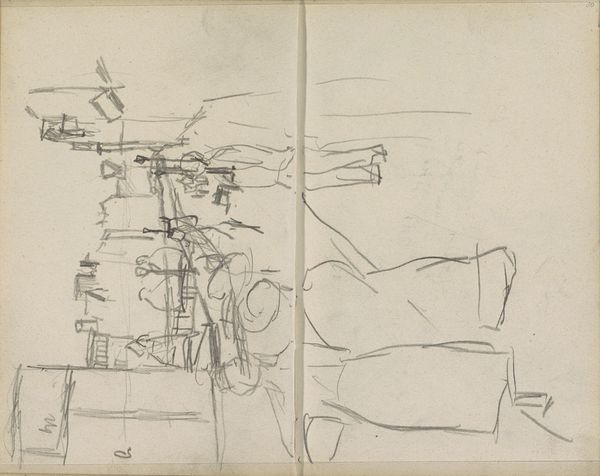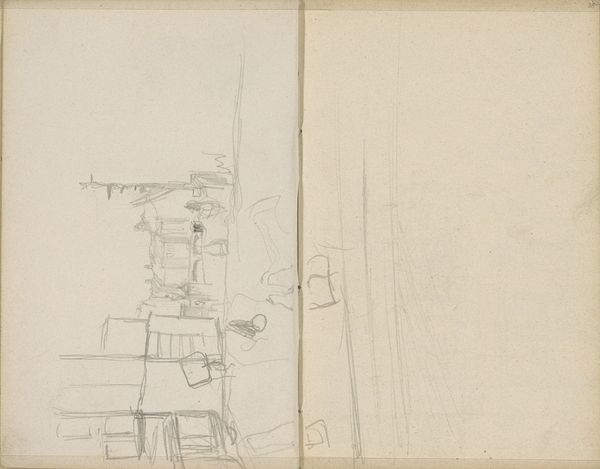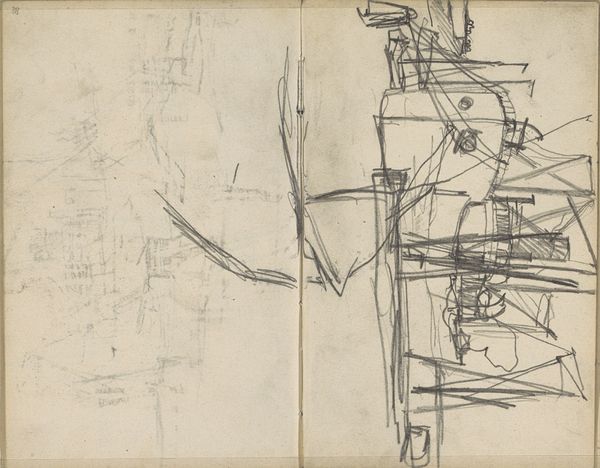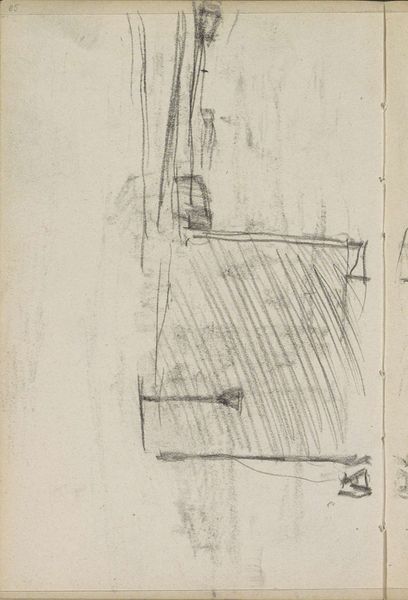
Gezicht op gebouwen aan het water in Amsterdam, mogelijk het Rokin c. 1906 - 1923
0:00
0:00
Copyright: Rijks Museum: Open Domain
Curator: George Hendrik Breitner's pencil and graphite drawing, “View of Buildings on the Water in Amsterdam, Possibly the Rokin," dating from about 1906 to 1923, captures a moment in Amsterdam. What's your first impression? Editor: Immediate—raw. You get a sense of transience, a fleeting sketch that’s barely there on the page. The lack of heavy line work almost makes the buildings seem spectral, like they might vanish. Curator: I agree. It embodies an intersection of art and life. We often talk about Breitner and the working class and those themes carry over here even in the architectural study. Look at how the precision yields near the water where one expects that Breitner saw the work being done at the port or at the market and recorded that into this page. Editor: Right. Considering it's pencil and graphite on paper, it directs attention to its materiality: a study likely produced on-site and concerned with how the very buildings we see along the water's edge came into being themselves through processes of design, labor, and sourcing of building supplies. Curator: It’s striking, though, how even in a quick study, you feel the weight of history and, really, even contemporary issues within the framework. This location was and continues to be central for Amsterdam’s role in trading—its connections to larger global dynamics. That he focused on this site seems intentional, placing the built environment within the reality of that global political and economic context. Editor: Precisely. The sketch captures a nexus of Amsterdam's material history, and invites speculation as to the origins of materials for its trade as much as for its building. We see, therefore, an unpolished view into globalized infrastructure and, equally, something akin to what the Rokin is today as one of Amsterdam’s central thoroughfares for consumption. Curator: Considering this work in relation to that intersection of urban development and labor history, its sketched form becomes even more pertinent, no? Breitner doesn’t polish this for market consumption; he’s marking, recording. Editor: It leaves the materiality of artistic labor visible; less a saleable aesthetic object, and more the by-product of work involved in witnessing, drafting, and situating a place. Curator: Thinking about it now, in that context, this brief visit really expanded how I can appreciate not just Breitner’s mark but the deeper, connected reality that produced it. Editor: Indeed. The drawing lays bare how something comes into being. The city, the artwork—they all reveal themselves in process.
Comments
No comments
Be the first to comment and join the conversation on the ultimate creative platform.
